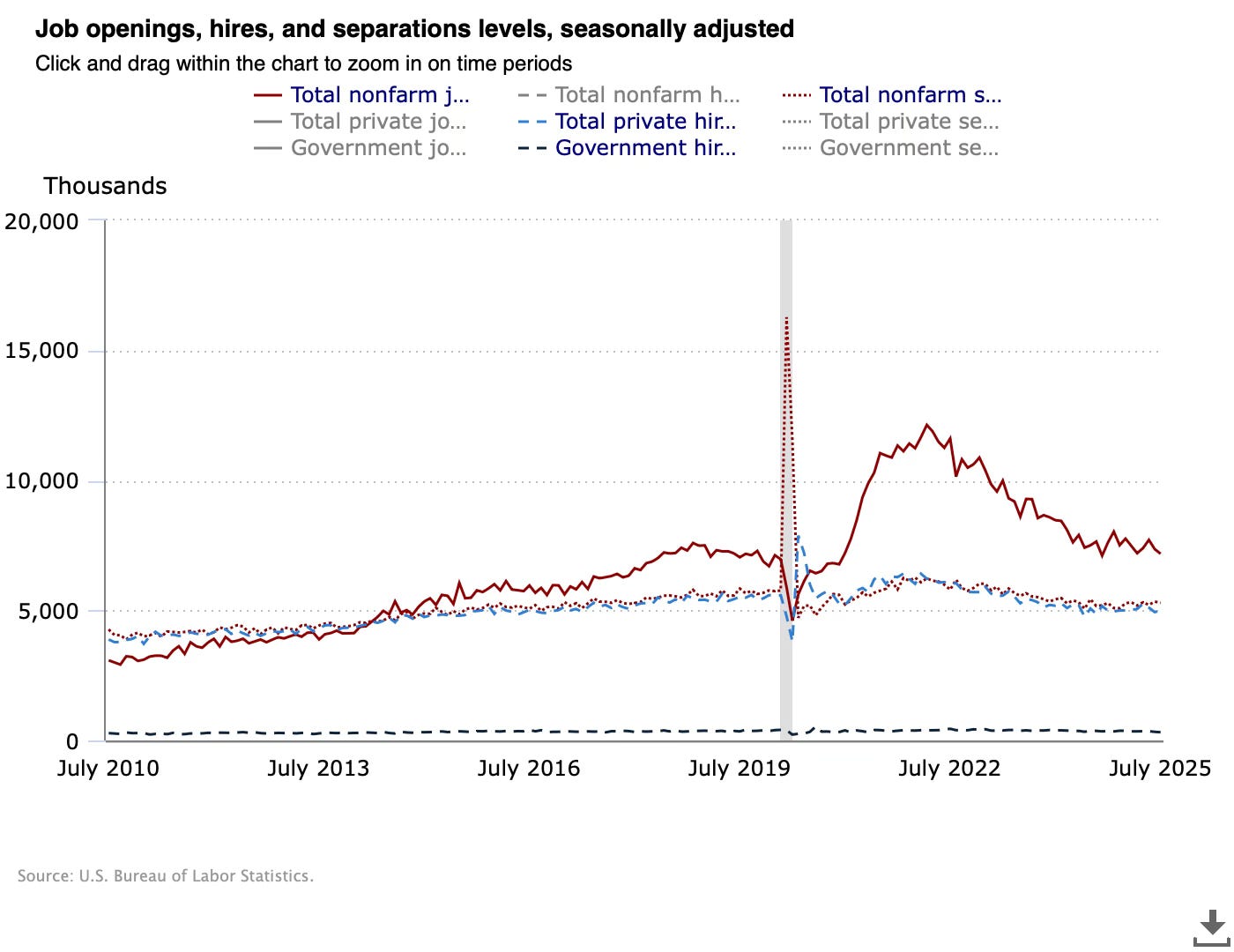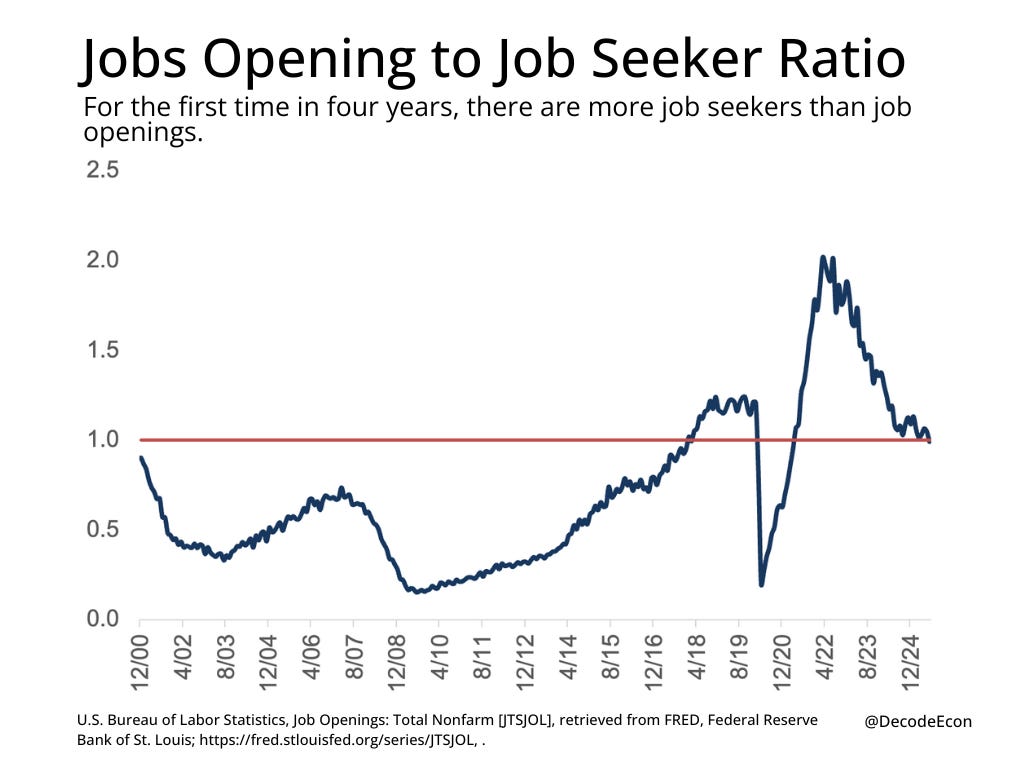The Job Market is Cooling
Latest Update on U.S. Employment
Our post is slightly delayed today because of the release of the Employment Situation Report from the Bureau of Labor Statistics. The headline numbers: the unemployment rate came in at 4.3%, and payrolls grew by an anemic 22,000 jobs.
This is a terrible jobs report, and the story gets more complicated.
The Market Is Frozen
The latest JOLTS data show that job openings fell to 7.2 million — the lowest level since February 2021.
We are seeing an increased prevalence of “Job Hugging”. Quits are down, but so are layoffs. You’re not likely to lose your job, but it’s harder to land a new one.
Hiring has slowed, leaving the labor market in a kind of stalemate: stagnant hiring, low turnover, and minimal layoffs. The market is frozen, and market uncertainty about tariffs and policy might be to blame.
Fewer Jobs than Job Seekers
For the past four years, the job market has been remarkably resilient, consistently favoring workers. The job openings-to-job seekers ratio stayed above one — meaning there were more available jobs than people to fill them. But in July, that balance shifted: for the first time in years, there are now more job seekers than job openings.
Healthcare Changes
Healthcare had been the engine of job growth. Now, cracks are showing. Hiring in healthcare is slowing, and confidence among healthcare workers has dipped below 50%, according to Glassdoor.
This slowdown is impacting women of color at higher rates due to their overrepresentation in the care industry. Kate Bahn, chief economist at the Institute for Women’s Policy Research, on a recent episode of Marketplace said:
“We’re seeing Black women in particular, having pretty significant job losses. In the last six months they’ve lost over 300,000 jobs.”
The Bottomline
The labor market remains steady on the surface, but the underlying dynamics are shifting: fewer opportunities, slowing healthcare hiring, and new signs of worker vulnerability. The era of easy job switching may be over.
Contribute to Decode Econ
At Decode Econ, we’re looking to expand our team of contributors to help make sense of the economy. Are you interested in joining us? Reach out.




With the advance of AI, entry-level jobs are most at threat while senior positions are for now relatively unaffected. Another hit for those coming out of college or in their 20's.
My Google AI says: "The increase in the U-6 unemployment rate to 8.1% is not solely due to a direct shift from permanent to short-term jobs, but the rise in involuntary part-time work and other forms of underemployment is a significant factor. While many complex factors affect the U-6 rate, recent reports from the Bureau of Labor Statistics (BLS) indicate that involuntary part-time employment has been trending upward." Part-time labor, now 17.4%, has been trending slowly upward since "involuntary part-time labor" was first tracked in 1968 at 13.5%. In August 2025, the number of full-time workers decreased by approximately 438,000, while the number of part-time workers increased by about 527,000.